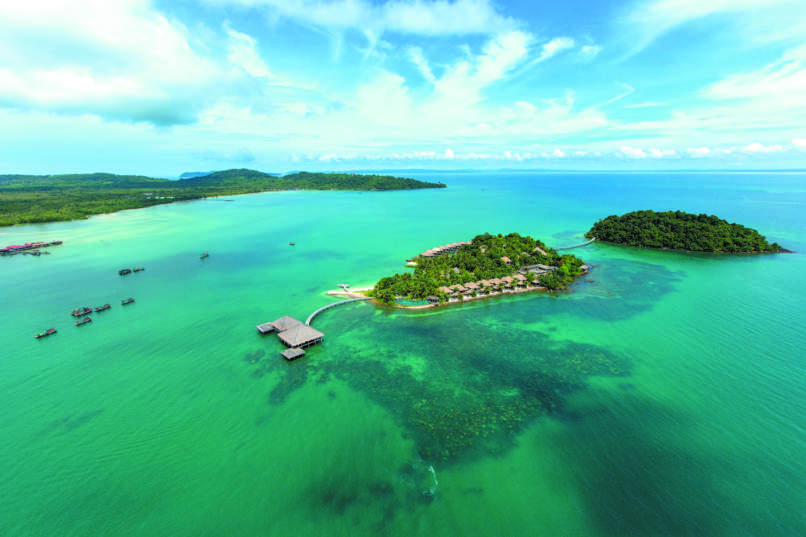Cambodia
Home to the UNESCO-listed Angkor Wat temple complex at Siem Reap, Cambodia is a treasure trove of cultural relics from the Khmer empire. Today, intriguing remnants of Khmer culture exist alongside ethnic tribal traditions — with stunning green hills and sprawling rice fields as backdrop.
Cambodia, officially known as the Kingdom of Cambodia, is located between Thailand and Vietnam in Southeast Asia. The country’s capital and largest city is Phnom Penh, which serves as the state’s political and financial heart. Ninety-five percent of the country’s 16 million population practice the official religion of Theravada Buddhism.
The Mekong river and the Tonle Sap, the largest freshwater lake in Southeast Asia, is the wellspring of Cambodian life, responsible for supplying fish and feeding the extensive rice fields in Cambodia’s vast low-lying plains. A visit to villages in the Mekong basin, with its people still immersed in age-old practices and crafts such as silk weaving, is like going back in time. What draws visitors is also the fact that the Mekong countryside landscape is incredibly photogenic.
While pastoral and laid-back, the Mekong plains have also seen the most vibrant chapters of history, the most impressive of all being the Khmer empire and its capital of Angkor. Enduring for many generations, the Khmer empire flourished from the 9th to 15th century. At its peak from 1010 to 1220, Angkor became a megacity that housed 0.1% of a 300 million global population at the time. Today, this ancient city is a UNESCO World Heritage Site that includes Angkor Wat, the largest and best preserved of the Angkor temples.
The rest of Cambodia also shines. The urban centers of Phnom Penh and Siem Reap each has its own distinctive flavour, where old traditions exist alongside new and equally impressive modern influences, including fine dining that showcases the best of traditional Khmer cuisine. A cultural renaissance is currently in full swing as the country celebrates its rich Khmer heritage and embraces its colonial past as a 18-19th century French protectorate.
Their easy-going and welcoming nature aside, the Cambodia people displays resolute strength and character that has helped them rise from the strife-torn Khmer Rouge era of the 1970s. Thankfully, the best days of Cambodia are here and now.
Regarded as the largest religious monument in the world, Angkor Wat (translating to “City of Temples” in English) is the most significant relic from the ancient Khmer empire.
Besides being known as the home of the Angkor Wat, Siem Reap is an alluring city with Old World flavour and small-town charm.

“A city of white buildings, where spires of gold and stupas of stone rocket out of the greenery into the vivid blue sky.” The words of American visitor Robert Casey in 1929 still hold true today as Phnom Penh steps into modernity.

With its long sandy beaches and palm trees, Cambodia’s resort destination shows off a different side of the country to visitors.




